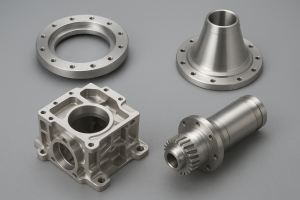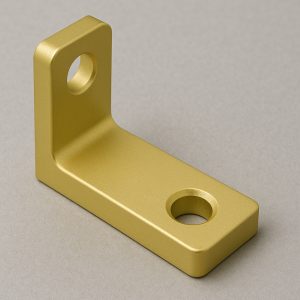In the world of computer-aided design (CAD) and digital manufacturing, STEP files have become the universal standard for sharing 3D models. Whether you’re an engineer, designer, or manufacturer, you’ve likely encountered a file ending in .step or .stp.
The STEP format—short for Standard for the Exchange of Product Model Data—was created to allow seamless collaboration across different CAD software platforms. Unlike file types limited to a single program, a STEP file preserves complete 3D geometry, metadata, and product structure, making it one of the most versatile formats in digital manufacturing.
This article explores what a STEP file is, how it works, how to view or create one, and why it’s such a vital tool for modern design and engineering workflows.
What Is a STEP File?
A STEP file is a standardized 3D model format that enables designers and engineers to share CAD data across multiple software environments. The format follows international standards set by the ISO 10303 specification, developed by the International Organization for Standardization (ISO).
In essence, STEP files serve as the common language between CAD systems. Whether you use SolidWorks, Fusion 360, CATIA, or Creo, a STEP file can bridge those ecosystems, allowing accurate transfer of part geometry and assembly data.
Think of a STEP file as the “PDF” of the 3D modeling world—a universal format that ensures everyone can open, view, and work with the same digital model, regardless of the software they use.
What’s Inside a STEP File?
A STEP file doesn’t just store the shape of a 3D model—it also contains critical design information that helps preserve product intent. Typical data elements include:
-
3D geometry: Points, curves, surfaces, and solid models.
-
Product structure: Assembly hierarchies and relationships between components.
-
Metadata: Tolerances, materials, units, colors, and sometimes even manufacturing information.
-
Formatting and syntax: STEP files are structured in plain text, which allows compatibility with multiple systems.
This text-based structure makes it possible for engineers to edit or inspect the data using standard text editors—although most rely on CAD or viewer software for practical use.
Who Created the STEP File Format?
The STEP format was developed by ISO’s Technical Committee 184, which focuses on automation systems and integration. Work on STEP began in the mid-1980s as part of a global effort to create a neutral, standardized data format that could represent 3D product information.
The first official version, ISO 10303-21, was released in 1994. Since then, new parts and application protocols (APs) have been added to expand its capabilities for different industries, from mechanical design to electrical and systems engineering.
Today, STEP remains the most widely supported CAD exchange format in manufacturing.
How to Convert a File to STEP Format
Converting an existing 3D model to a STEP file is simple—most professional CAD programs include built-in support for exporting to STEP. The general process looks like this:
-
Open your CAD software.
For example: SolidWorks, Fusion 360, FreeCAD, or CATIA. -
Load your design file.
Open the part or assembly you want to convert. -
Go to the Export or Save As menu.
Choose “Export” or “Save As” from the file menu. -
Select the STEP file format.
Choose .STEP or .STP as the export file type. -
Adjust settings (optional).
Some software allows you to include color, assembly hierarchy, or tolerance data. -
Save and verify.
Export the file and re-open it in a viewer to confirm accuracy.
Because STEP files are universally recognized, this process ensures your design can be opened in virtually any other CAD system without loss of geometric integrity.
💡 Tip: If you plan to 3D print a model, you’ll need to convert the STEP file to an STL format, which represents mesh geometry suitable for slicing.
How to View a STEP File
You don’t always need premium CAD software to open a STEP file. Many free viewers and open-source programs can display 3D STEP models, making collaboration easier across teams.
Here’s how to open a STEP file:
-
Locate the file on your device.
Find the file with a “.stp” or “.step” extension. -
Open with your preferred software.
Double-click the file or right-click → “Open with,” then choose your CAD tool or STEP viewer. -
View and inspect the model.
Once open, you can rotate, zoom, and measure the model as needed.
Recommended Free STEP Viewers
-
FreeCAD – Open-source 3D modeler that supports full STEP import/export.
-
VariCAD Viewer – Lightweight tool for opening and inspecting STEP files.
-
3D Viewer Online – Web-based viewer that lets you view STEP files directly in your browser without installation.
If you’re collaborating remotely or across different operating systems, web-based STEP viewers are often the most convenient choice.
How to Create a STEP File
Creating a STEP file is an integral part of modern design workflows. Virtually all professional CAD programs can export models to STEP.
Here’s how to make one:
-
Start a new project in your CAD program.
Use software like SolidWorks, Autodesk Inventor, CATIA, or Creo. -
Design your part or assembly.
Create the 3D geometry, apply constraints, and define materials as usual. -
Save or export as a STEP file.
When your model is complete, go to “File” → “Save As” or “Export,” and select the.STEPor.STPoption. -
Verify export settings.
Some tools allow you to include or exclude assembly information, colors, or product metadata.
Once saved, your STEP file can be opened across platforms, ensuring consistent model data throughout the design and manufacturing process.
Types of STEP Files (Application Protocols)
Not all STEP files are the same. ISO defines several Application Protocols (APs), which determine how data is structured and what information it includes:
-
AP203 – Focused on 3D geometry and configuration management for mechanical design.
-
AP214 – Adds support for colors, dimensions, and tolerances.
-
AP242 – The most modern version, combining AP203 and AP214 with additional features like Product Manufacturing Information (PMI) and tessellated geometry for visualization.
AP242 is now considered the industry standard, especially for digital twin and Model-Based Definition (MBD) workflows.
Best STEP File Converters
While most CAD programs can handle STEP export natively, standalone converters can also help manage large projects or cross-platform workflows. Here are some of the best options:
-
FreeCAD: Excellent for editing, viewing, and converting to and from STEP format.
-
gCAD3D: A free, lightweight tool that supports many 3D formats, including STEP, STL, and 3DS.
-
Gmsh: Ideal for engineers working with meshing and simulation—it imports STEP geometry and exports to mesh formats.
Each tool varies in capability, but all allow you to inspect or convert STEP files efficiently.
Popular Applications for STEP Files
STEP files are used in nearly every engineering and manufacturing sector. They enable consistent collaboration from concept to production. Common use cases include:
-
Mechanical design: Sharing parts and assemblies between different CAD tools.
-
3D printing: Preparing 3D models for slicing after conversion to STL.
-
CNC machining: Importing precise geometry for toolpath generation.
-
Product visualization: Viewing and reviewing models without needing the original design software.
Recommended CAD Tools Supporting STEP
-
Fusion 360: Offers strong STEP support and cloud collaboration tools.
-
SolidWorks: Can import/export STEP with full assembly data.
-
CATIA and Creo: Used widely in automotive and aerospace industries.
-
3D Viewer Online: Ideal for quick inspection and sharing through browsers.
Frequently Asked Questions About STEP Files
1. What Is the Importance of a STEP File?
STEP files allow seamless data exchange across software ecosystems. They preserve precise geometry and structure, ensuring that engineers and manufacturers can collaborate efficiently without compatibility issues.
2. Is a STEP File the Same as a CAD File?
A STEP file is a type of CAD file—but not all CAD files are STEP. While native CAD files are program-specific (e.g., SLDPRT for SolidWorks), STEP is a neutral, universal format for cross-platform sharing.
3. Can I 3D Print from a STEP File?
Not directly. To 3D print, you must convert your STEP file to STL, which represents the model as a triangulated mesh suitable for slicing software.
Summary
In summary, the STEP file format (ISO 10303) is the global standard for interoperable 3D model exchange. It captures detailed product geometry, assembly data, and metadata in a text-based format that nearly all CAD programs can read.
Whether you’re viewing, converting, or creating 3D models, STEP files ensure that your design intent remains intact across platforms and collaborators.
About KingsMG
KingsMG is a leading provider of advanced manufacturing solutions, specializing in CNC machining, 3D printing, injection molding, and sheet metal fabrication. We help engineers and businesses bring ideas to life through precision manufacturing, rapid prototyping, and scalable production.
Visit the KingsMG website today to learn more about our capabilities or to request a free, no-obligation quote for your next project.
Disclaimer
The information presented in this article is for educational and informational purposes only. KingsMG makes no warranty—express or implied—regarding its accuracy, completeness, or suitability for any specific purpose. Actual results and material performance may vary depending on design, process, and equipment. For official specifications or quotations, please refer to KingsMG’s terms and conditions.




